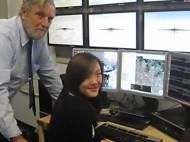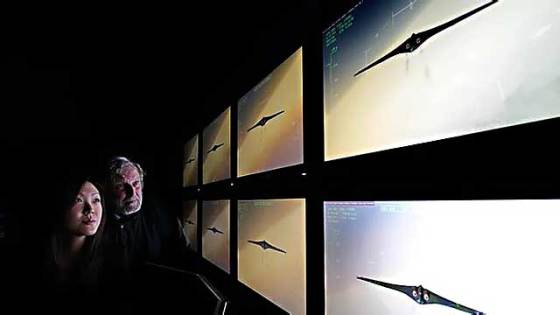Swarming UAVs could be used to save lives at sea
 Inspired by the swarming patterns of animals in nature, an aerospace engineering PhD student from the University of New South Wales (UNSW), Australia, is using biomimicry to develop an algorithm which simulates novel and chaotic flight formations of unmanned aerial vehicles (UAVs). The results could be used in order to improve their performance in marine search and rescue missions.
Inspired by the swarming patterns of animals in nature, an aerospace engineering PhD student from the University of New South Wales (UNSW), Australia, is using biomimicry to develop an algorithm which simulates novel and chaotic flight formations of unmanned aerial vehicles (UAVs). The results could be used in order to improve their performance in marine search and rescue missions.
Monica Chi, from the School of Mechanical and Manufacturing Engineering at UNSW, is part of a team of researchers at UNSW which uses “evolutionary” algorithms to simulate team work which swarms and packs exhibit. UAVs that mimic the swarm behaviour demonstrated by animals such as ants, honeybees, and wolves, could prove useful in search and rescue, as well as in exploring.
“The strengths of having UAVs rather than piloted vehicles for marine search and rescue is that they are not limited by human capability in terms of flying in dangerous or poor visibility conditions”, sais Chi. “The simulations help us test and analyze new optimizing algorithms to reduce the cost and amount of resources consumed in search and rescue, and also to reduce the response time and increase the probability of saving lives.”
In the event of a shipwreck or distress call, one of the first things rescuers do is establish a search boundary. In Chi’s simulations, individual drones in the swarm of UAVs communicate with each other and take cues from their environment through rule sets as they search the specified area.
These rules ensure they deliver maximum search coverage in changing environmental conditions without colliding. When they identify survivors they are programmed to alter their flight patterns so they can track the target in open water until a rescue helicopter or vessel arrives.
“There really aren’t many people in the world taking this approach with simulation of UAVs”, said John Page, a senior lecturer in aerospace engineering at UNSW and Chi’s supervisor. “In addition to vehicles, we’re also looking at how these swarms can be applied to power generation and other complex systems.”










Leave your response!